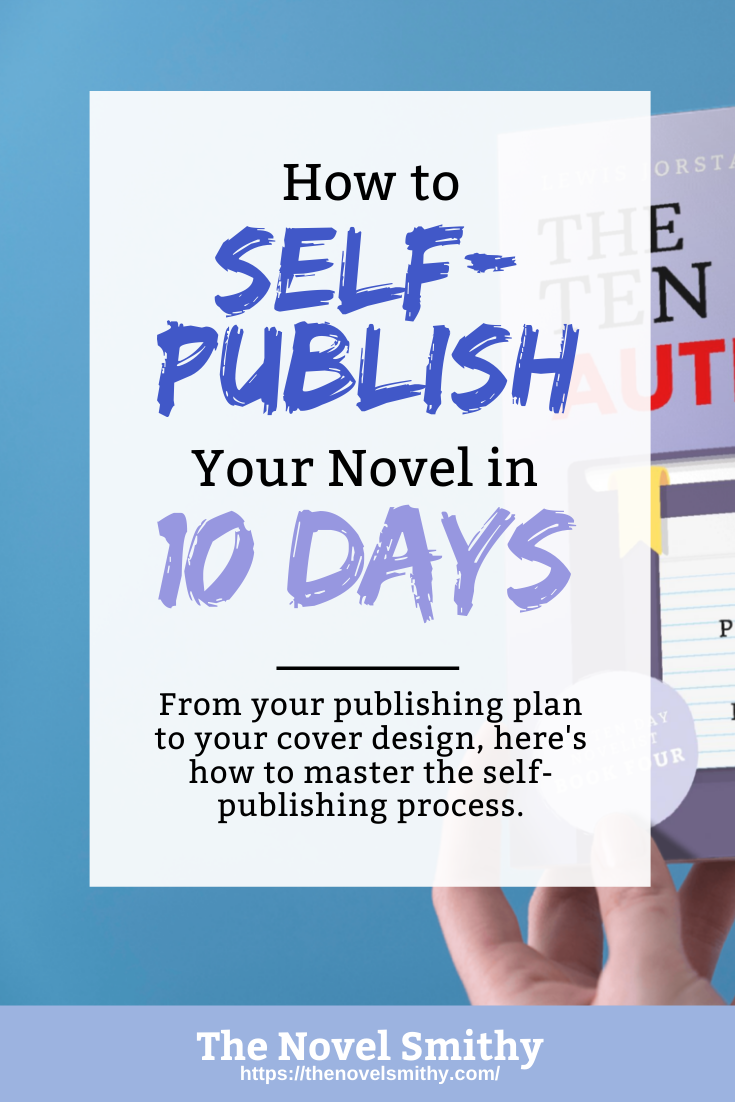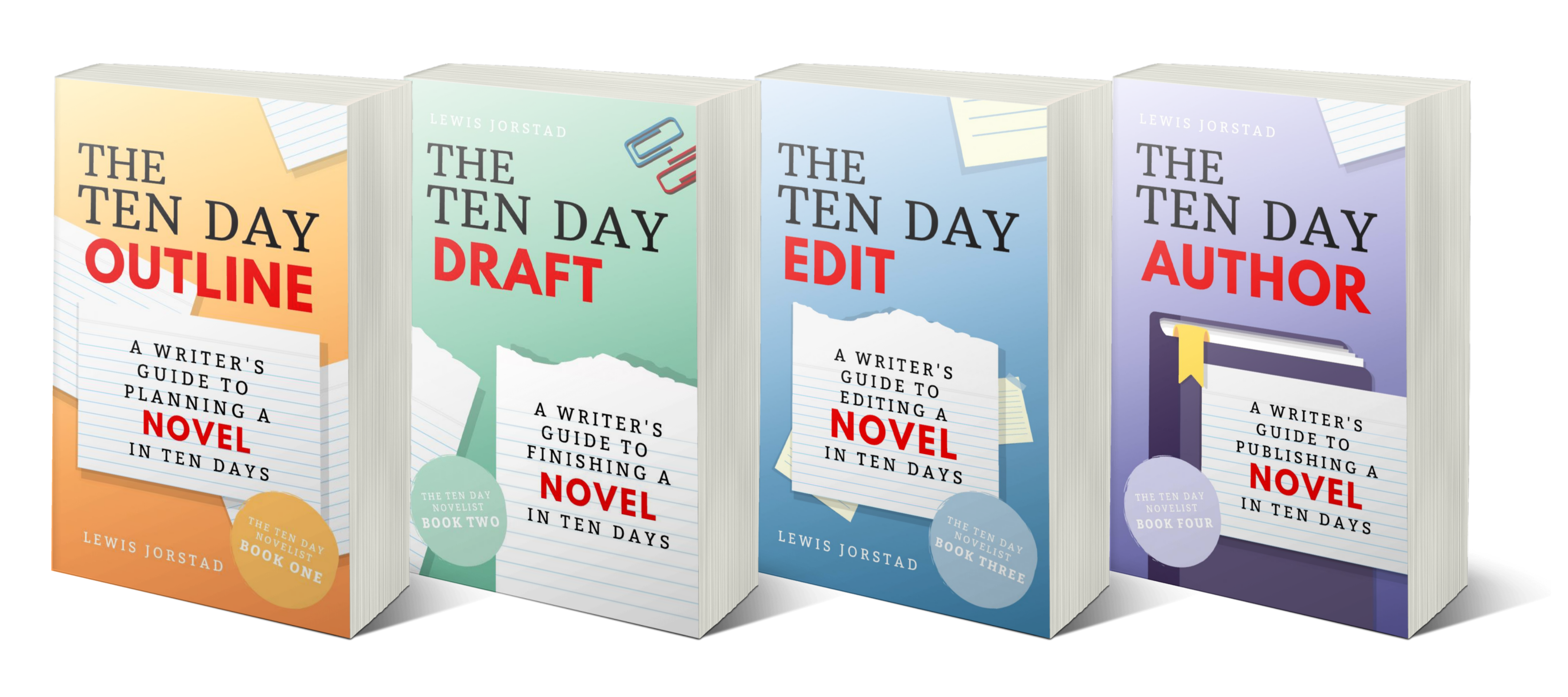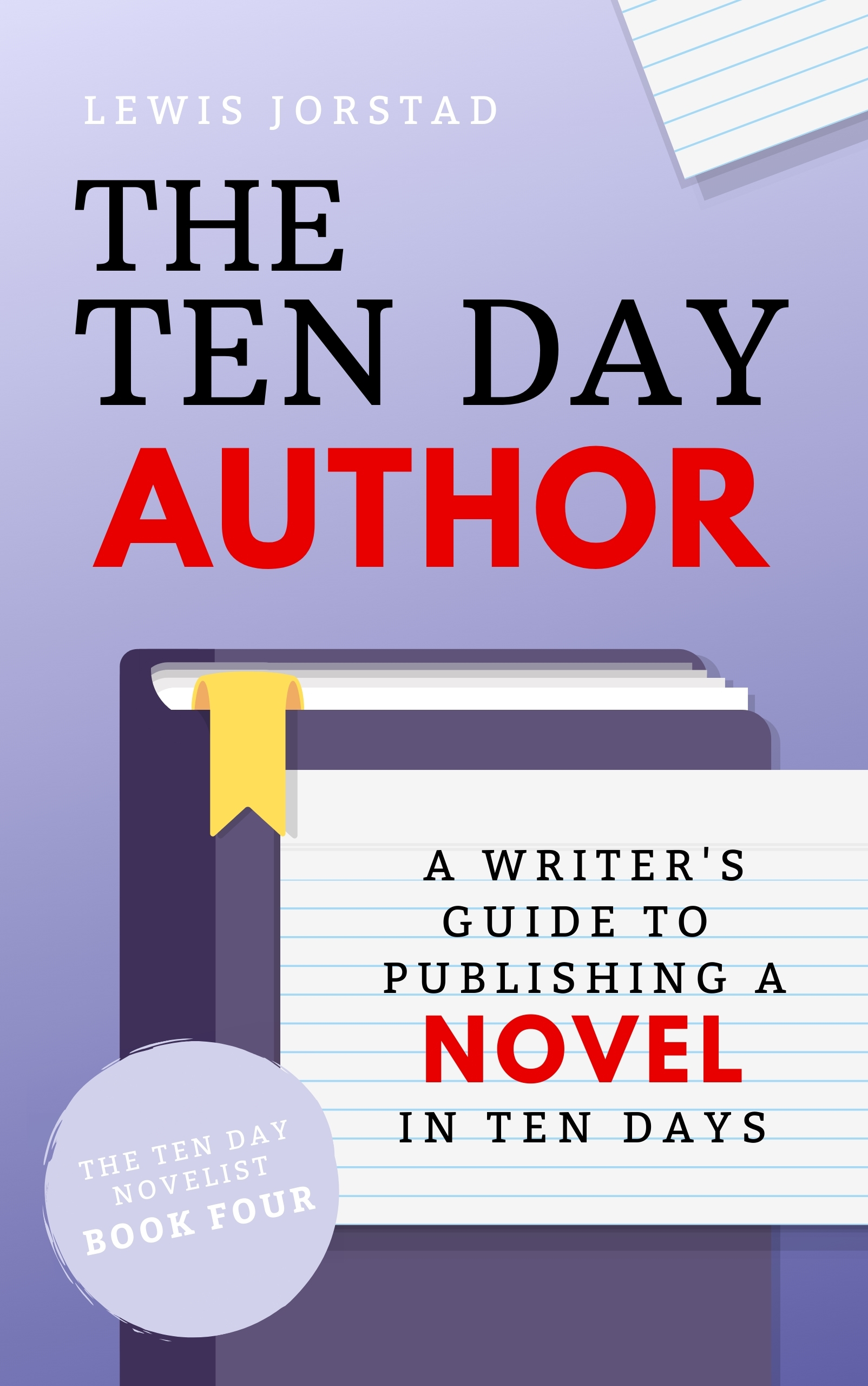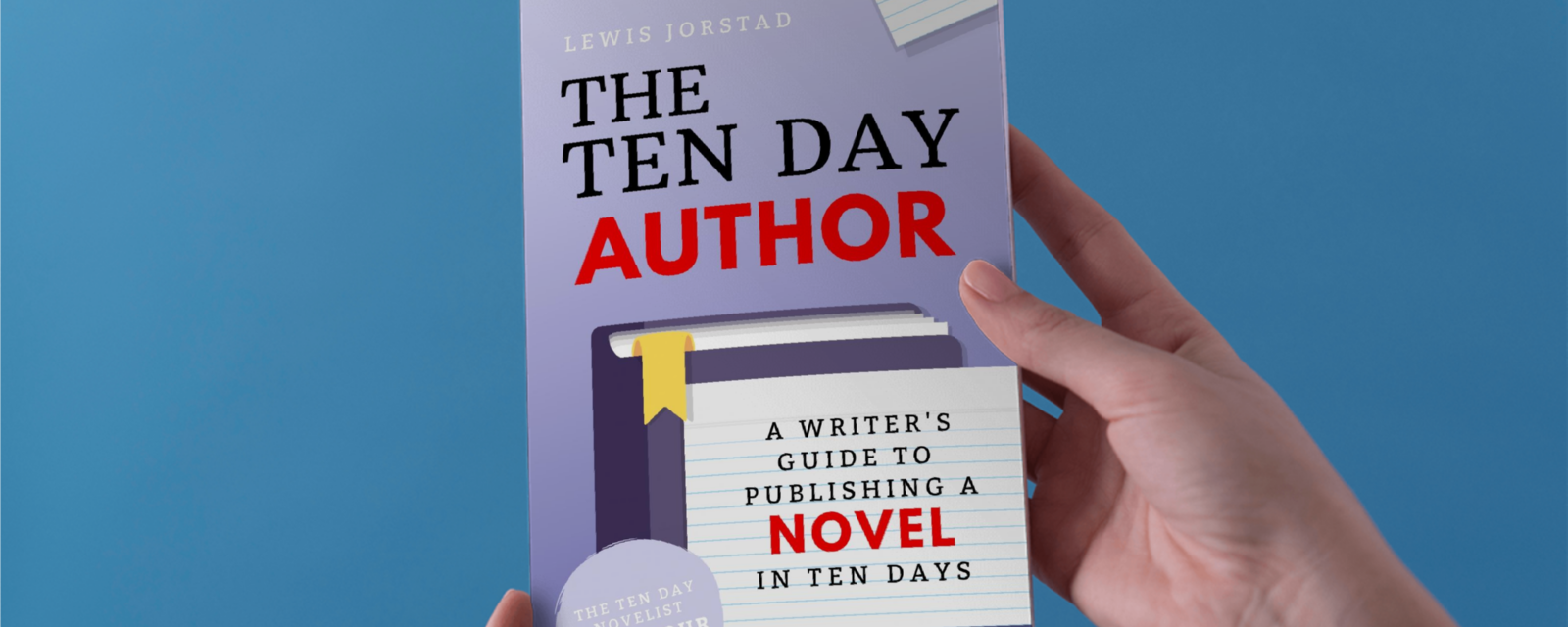How to Self-Publish a Novel in 10 Days
You’ve officially finished your novel… so, now what?
Well, once you’ve planned, written, and edited your story, there’s only one thing left to do—and that is to publish it. Of course, navigating the self-publishing process isn’t always easy, especially if this is your debut novel. From formatting your manuscript to handling categories, ISBNs, and more, you have a lot to think about before your novel is ready to launch.
Fortunately, you don’t have to go in alone. In this article I’ll walk you through my personal, ten-step self-publishing process, covering every stage of publishing a novel. Best of all, no matter how new you are to the world of self-publishing, I’m confident this will be just the starting point you need!
_______________________________
This article is adapted from my new book, The Ten Day Author. If you like what you see, you can find much more detail—including step-by-step guides, templates, and examples to walk you through every stage of the self-publishing process—in the book itself.
_______________________________
The Challenges of Self-Publishing a Novel
Contents
 Self-publishing is an incredibly rewarding experience, and for many authors, it’s their preferred way to share their stories with the world.
Self-publishing is an incredibly rewarding experience, and for many authors, it’s their preferred way to share their stories with the world.
You see, self-publishing gives you almost total creative control. Likewise, self-publishing is very practical—self-published authors can turn on a dime to keep up with the ever-changing book market, and also benefit from the higher royalties afforded to indie authors. All of this adds up to make self-publishing a huge advantage for authors who know how to make the most of it.
Of course, that doesn’t mean self-publishing is without its fair share of challenges.
There are a ton of unfamiliar elements that go into publishing a novel, and as a self-published author, you’re in charge of all of them.
Think about it—to self-publish a novel, you’ll need a:
- Finished, fully formatted manuscript,
- Solid understanding of your novel’s market,
- Well-thought-out pricing strategy,
- Professional author bio and photo,
- High-quality cover design,
- And more…
To make matters worse, many writers dive into this process blind. They don’t know what to expect, and as a result they essentially force themselves to publish their novels backwards.
This is where having a clear process becomes so valuable.
With a map to follow, you can anticipate many of the hurdles you’ll face throughout your self-publishing journey—and while this map won’t get rid of those challenges, it will ease them. So, without further ado, lets dive into the ten steps you’ll need to complete to publish your novel—so you can start fully enjoying the indie author life!
Uncertain if self-publishing is the right path for you? No worries! Check out my guide to the pros and cons of self-publishing versus traditional publishing here. Once you’ve made your decision, you can come back to this article.
How to Self-Publish Your Novel in 10 Steps
#1 Review Your Novel:
At first glance, this step may seem like it has nothing to do with self-publishing—but of everything on this list, it’s actually the most important.
You see, before you can begin publishing, your novel needs to be polished and ready to send into the world. Some authors do simultaneously edit and publish their novels, but I strongly advise against this if this is your first time self-publishing. This is a skill learned through lots of practice, so rather than adding extra stress to your plate, make sure you’ve fully edited your novel before sitting down to publish.
Here are a few basic criteria to help you judge whether your novel is ready:
- Your story should be complete, with a clear conflict and resolution
- Your protagonist should undergo some kind of meaningful transformation
- Your novel should have consistent chapter breaks to guide readers
- Your manuscript should be thoroughly proofread
Alternatively, if you’re not quite ready to publish—or are stuck on some other stage of the writing process—here are some additional resources that can help:
If you’re planning your novel: The Ten Day Outline
If you’re writing your first draft: The Ten Day Draft
If you’re ready to revise: The Ten Day Edit
#2 Study the Market:
Once you have a polished story ready to share with the world, you can turn your attention to the first stage of self-publishing—studying the market.
This is where you’ll consider where your novel fits in the larger world of fiction, as well as figure out what kinds of readers would be most likely to enjoy your story. These are your target readers, and they’re the people you want to attract when publishing your novel.
Specifically, you can define your target reader with a few simple questions:
- What genres does your target reader enjoy? (Hint: it’s your genre!)
- How many books do they typically read in a month?
- How do they find more books to read?
- What aesthetic do they respond to?
Next, once you have a solid idea of who this target reader is, take a moment to figure out what categories and keywords they search with. These are the keywords where your novel is most likely to be found—meaning you’ll need them when it comes time to submit your manuscript.
#3 Create a Plan:
Moving down our list, it’s time to develop your publishing plan!
This publishing plan is essentially your personal self-publishing map, laying out everything from how, to when and where you’ll publish your novel. Ideally, this plan should be pretty well-organized, as you’ll be referencing it a lot throughout this process.
In total, there are four things to consider when setting up your publishing plan:
- Where will you publish your novel?
- What formats—either ebook, print, or both—will you publish in?
- What price is best for your novel?
- When will your novel launch, and will you offer preorders?
Once you have these details sorted out, add any other information you came up with in previous steps. Again, this publishing plan should house all the pertinent facts about your novel’s launch—that way, you won’t have to go searching when you need them down the road.
#4 Gather Your Extras:
Next up, let’s talk about some of the extras that go into self-publishing.
If you’ve been neck deep in writing and editing your novel until this point, you probably never realized just how many little things go into publishing a novel. However, it’s often these extras that set professional novels apart from amateurish ones—meaning these are all things you’ll want to take seriously for your own novel.
What are these extras, you might ask? Well, here are the main ones:
- An ISBN for each format you plan to publish in (or a free option)
- A polished back cover blurb to describe your story
- Your choice of pen name
- A professional author bio and author photo
While these might not seem like much at first glance, they’ll go a long way towards both smoothing your self-publishing experience—as most of these are mandatory—as well as giving readers confidence that your novel is worth investing in.
#5 Build Your Final Manuscript:
With those tasks complete, it’s finally time to work on your manuscript itself! This is where you’ll start diving into the world of book formatting, typography, and all the other bits and pieces that go into creating a professional-looking manuscript.
Of course, this naturally comes with a bit of a learning curve, so if this sounds intimidating, don’t worry! There are tons of great formatting options available, including free options like the Reedsy Book Editor and paid (but more professional) options like Vellum.
Ultimately, regardless of what software you use, here are some things to look out for:
- Is your formatting clear and easy to read?
- Do you reserve fancier fonts for your chapter headers?
- Is your text properly justified, with variable spacing?
- Is your front matter paginated with the correct Roman numerals?
- Does your manuscript include a title, copyright, and about the author page?
- Is your front and back matter in the correct places?
If you’d like to use Vellum—my personal favorite formatting software—I highly recommend this tutorial from Joanna Penn over at the Creative Penn. She was the first person to introduce me to Vellum, and her guide went a long way in helping me get comfortable with the software!
#6 Commission a Cover:
By this point in the self-publishing process, your novel is mostly complete—meaning it’s time to turn our attention to everything that surrounds your novel!
The first thing on our list is your cover design.
For the most part, I highly recommend hiring a designer to handle your cover, as a professional cover will be one of the best investments you can make in your novel’s success. Unlike formatting software, which can do most of the hard work for you, cover design is all about raw skill—meaning there’s nothing wrong with deferring to a pro.
Of course, if you do have design experience, you can absolutely design your own covers! I’ve created all the covers in my Ten Day Novelist series, but I do have a background in design (though I’m certainly no professional).

Either way, your ideal cover is one that will mesh with the others in your genre. To get a feel for what this would look like, I recommend skimming through the bestsellers lists for your novel’s subgenre and saving a few covers that resonate with you.
Then take notes on these things:
- What kinds of font do these covers use?
- Do you see any repeated color palettes?
- Are there any common subjects or styles?
- What mood or tone do these covers evoke?
Once you have this list in hand, you can either share it with your chosen designer, or use it to shape your DIY cover if you choose to design it yourself!
#7 Upload Your Novel:
With your cover ready and your manuscript formatted, it’s time to submit.
You’ve gone through a lot of work by this point in the self-publishing process, and it was all leading up to this moment. Now, when you sit down to submit your novel, you’ll already know a few key things:
- Where you plan to publish
- What formats you plan to publish in
- Which categories and keywords best fit your novel
- Your novel’s price
- Your novel’s launch day
- Whether or not you’ll offer preorders
Alongside this information, you’ll also have both your manuscript and cover ready to go, along with things like your ISBN and book blurb. All of these will go a long way towards smoothing this experience, as well as ensuring no last-minute surprises derail your progress!
#8 Start Promoting:
Next up, no book launch is complete without a bit of promotion.
Even if you’re just self-publishing for your own creative fulfillment, you’ll likely still want to spread the word somehow, which could mean anything from emailing friends to running a massive ad campaign. Of course, how you promote your novel will depend on your goals—but in general, your book promotion options boil down to two categories:
Your Network: These are the people already interested in your novel, such as friends, family, and your current readership. Whether you offer Advanced Review Copies, send out a series of email blasts, or run a giveaway, these will be the first people you promote your novel to.
New Readers: Of course, you’ll also want to reach out to new readers if you can. This is where things like paid advertising, social media, and newsletter swaps come in. You’ll likely end up spending some money here, though you can (and likely should) start out with a small budget. Once you know the ropes, you can always spend a bit more.
Ideally, I recommend picking only one or two options from these categories.
Then, once you have a plan, focus your efforts on just those things—rather than trying a little of everything. By specializing, you’re much more likely to achieve good results, and you’re also less likely to burn out in the process.
#9 Check Your Work:
We’re officially approaching the finish line, but before we get there, you’ll need to check your homework.
This is your last chance to ensure all aspects of your novel’s launch are ready before sales go live. Ultimately, no matter how meticulous you might have been, mistakes happen—some because of human error, and some because of technical glitches.
So, before you start counting down until launch day, double check these things:
- Your manuscript files are correct
- Your novel’s cover is sharp and clear
- Your blurb doesn’t have any typos
- You selected the right categories when submitting your novel
- Your launch day is set for the right date
- Your price is appropriate for your genre
If everything on this list is good to go, then all that’s left to do is wait.
#10 Launch!
The day has finally come—you’re officially a self-published author!
As exhausting as this process may have felt in the moment, looking back I hope you realize it wasn’t too bad. Though you had a lot on your plate, nothing here was any more difficult than any other part of your writing journey, and the end results are well worth it. Even better, now that you’ve been through it once, it’ll only get easier for each novel you publish!
However, planning your next story will have to wait.
For now, your only job is to sit back and enjoy your brand new novel. 🙂

The Magic of Self-Publishing
Overall, self-publishing feels like a fitting way to cap off the writing journey. By this point in the process, you’ve accomplished so much—from creating a story out of nothing, to polishing and refining it into a finished novel. Now, it’s simply a matter of gathering your courage and putting your novel out into the world!
Of course, actually doing so won’t always be easy.
Though I hope this article has given you a solid preview of the self-publishing process, I also know just how intimidating that process can be. Even when you know what’s ahead of you, the desire for more help can be strong—and completely valid.
That’s why I wrote The Ten Day Author.
 If you read through this article and found yourself wishing for more step-by-step guidance, this book will walk you through every stage of the self-publishing process. What’s more, it won’t shy away from the details, so you’ll not only know what to do, but why you need to do it.
If you read through this article and found yourself wishing for more step-by-step guidance, this book will walk you through every stage of the self-publishing process. What’s more, it won’t shy away from the details, so you’ll not only know what to do, but why you need to do it.
Add in some handy templates and a ton of helpful examples, and I would argue this is one of the best guides to self-publishing around—though I’m obviously biased. 😉
Either way, I hope I’m able to help navigate the wide world of self-publishing! I’m proud to be a self-published author, and at this point in my career, I don’t think I would have it any other way.
So, whether you’re ready to dive in or need a bit longer to prepare, let me know how I can help—and, consider checking out The Ten Day Author.
I’m confident it’ll be just the helping hand you need!


Leave a Reply